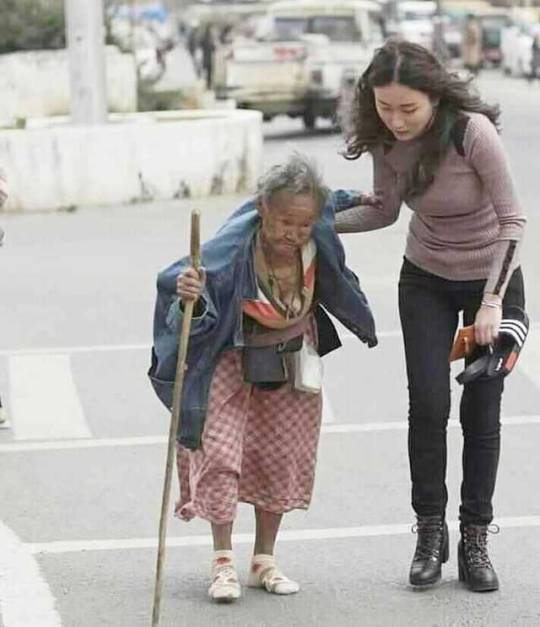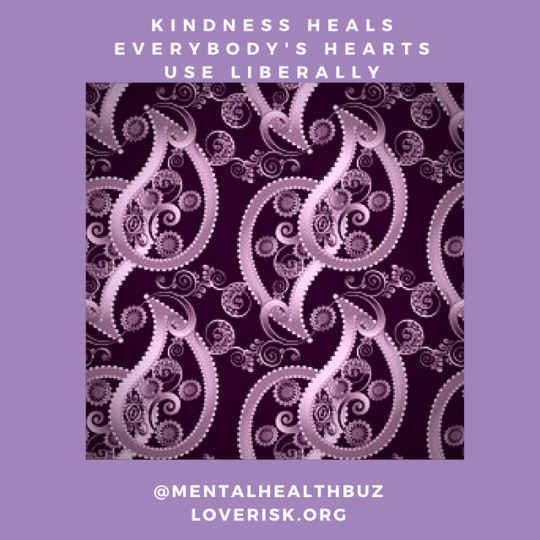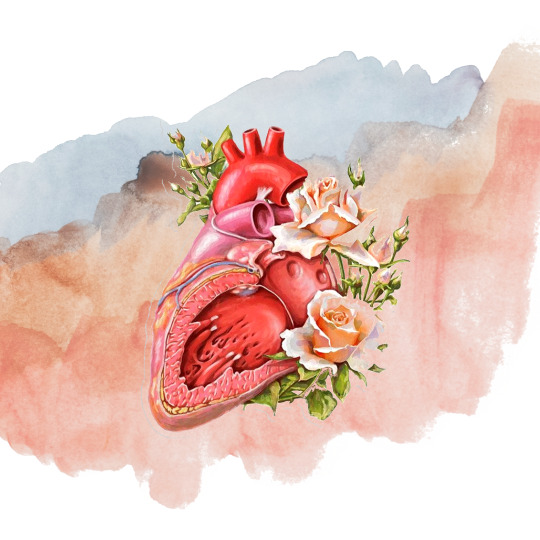#womenshearts
Photo


A much needed love to thyself
Stop thinking that people’s words matter to how you see yourself. Their own definition of beauty isn’t the standard you must chase. Stand in front of the mirror and start smiling to the person you see. You are beautiful even if your hair isn’t tied up or you have a bushy brows or whatever you think isn’t the same with those who surround you. Loving yourself is the only window to allow others to see your beauty.
YOU ARE BEAUTIFUL. ✨
2 notes
·
View notes
Photo

Moods Of A Woman An angel of truth A dream of fiction She is afraid of a wasp will scream at a mouse; but will tackle a stranger alone in the house. Sour as vinegar, sweet as a rose; she will kiss you one minute, then turn up her nose. She will win you in rage, enchant you in silk; She will be stronger then brandy, milder then milk. At times she will be vengeful, merry and sad; She will hate you like poison & love ❤️ you like hell...!! http://EnterYourMind.com #womensmood #women #womenempowerment #womensupportingwomen #womeninbusiness #womensheart https://www.instagram.com/p/B5Zde_sgFl5/?igshid=mtir0skqe422
0 notes
Photo

United Nagamese babtist #women fellowship Neisatuo colony visited the fire victims paid some cash and prayed for all. #humanityfirst #humanityisalive in #dimapurcity #womensheart #womanwholift (at Dimapur) https://www.instagram.com/p/Bz7W_XtH1oS/?igshid=gsdom3xorqd
0 notes
Photo

Heart disease is an invisible killer often going unnoticed and not openly talked about, yet it is a leading killer of Australian women, this morning we attended the @nationalheartfoundation Womens Hearts Breakfast, lifting awareness on Women's heart disease ❤️❤️❤️❤️ Thank You for having us 🌹🌹🌹🌹🌹🌹🌹 #womenshearts #perthlife #smelltheroses #perthtodo #theheartfoundation #heartfoundation #heartfoundationaustralia #heartdisease #creatingawareness #womensbreakfast #breakfastmorning #humpday #perthgirls #perthblogger #perthlifestyleblogger #perth #crowntowers #crowntowersperth (at Crown Towers Perth)
#heartfoundationaustralia#womenshearts#humpday#smelltheroses#perthgirls#breakfastmorning#perthlifestyleblogger#perthtodo#perthlife#heartdisease#crowntowersperth#heartfoundation#perthblogger#theheartfoundation#creatingawareness#perth#womensbreakfast#crowntowers
0 notes
Photo

This weeks online orders underway. Two yellow gold and diamond ‘From the Heart’ necklaces heading down to Melbourne town. 💛💛 #womenshearts (at Marina Antoniou Jewellery)
1 note
·
View note
Photo

I was so honored to emcee #WomensHeartHealthDay @cedarssinai on behalf of @lifescript. These amazing doctors are saving lives everyday with their cutting-edge research in women's heart health. Pictured (L to R): Moi, PK Shah MD, Sarah Kilpatrick MD, Deborah Clegg PhD and Noel Bairey Metz MD and director of the #BarbraStreisandWomensHeartCenter. #goredforwomen #wearredday #womenshearts (at Cedars-Sinai)
0 notes
Text
It’s never too late to enroll in VA health care services. If you’re looking for women-centered health care, sign up for the VA Women’s Health Reengagement Training (heaRT) to gain a better understanding of how VA can support your health care needs.
VA’s Office of Women’s Health (OWH) has pioneered 30 years of health research and programming for women Veterans. Now, OWH is launching a new program – the VA Women’s Health Reengagement Training (heaRT). This program is designed specifically for women with military service experience who are not enrolled in VA health care.
Why was the training developed?
Women Veterans may experience unique health-related challenges compared to their male counterparts, such as chronic pain, musculoskeletal issues and depression. Research has linked many of these challenges to military experiences that women face, such as ill-fitting equipment, harassment, bias and others. This underscores why it’s important that women Veterans know about VA health care and support services.
Why should VA health care be an option for you?
You have distinct health care needs as an individual, a woman and a Veteran. VA is uniquely equipped to care for you and understands the impact of your service on your health. There are a number of women advocates inside VA to help you navigate your health journey and providers that are trained specifically for your woman- and Veteran-centered health care needs.
How will you benefit from attending this training?
Through the VA Women’s Health Reengagement Training (heaRT), you will have the opportunity to connect with fellow Veteran women in your communities. You will learn about what Veteran- and women-centered VA health care services are available to you:
Preventive care and wellness
Women’s health services
Whole health & mental health services
How to determine VA care eligibility and enroll in VA
How do I register for the training?
The training will be a women-only, one-time, 3.5-hour session. To register, visit https://calendly.com/womensHeaRT. You are welcome to register for any session, but we recommend attending one hosted in your state to learn about customized local resources to you.
Both virtual and in-person sessions will be available. Please contact [email protected] with any questions.
1 note
·
View note
Photo

What we focus on gets bigger. Retrain your focus to what sets your soul on fire! #ican #lifeextraordinary #anxiety #depression #ptsd #epilepsy #aspergers #menshealth #womenshealth #christianlife #mindfulness #womensheart #WUWorldchanger
#wuworldchanger#ptsd#depression#aspergers#christianlife#mindfulness#ican#lifeextraordinary#womenshealth#womensheart#menshealth#anxiety#epilepsy
0 notes
Video
Try out our berry blast smoothie bowl! A perfect heart-healthy snack that is delicious and totally customizable! The smoothie bowl is packed full of various frozen fruits, topped off with whole grain oats and nuts to satisfy your heart and taste buds!
#cardio#cardiovascular#cardiology#cardiovascularfitness#women#womenshealth#womensheart#womenswellness#womensvital#science#cardiovasclar diseases#hearthealth#heart#nutrition#smoothiebowl#fruit
13 notes
·
View notes
Photo

Blessed are the merciful , for they shall obtain mercy . Blessed are the pure in heart , for they shall see God . Matthew 5:7-8 #girlswholift #womanwholift #womensheart #helpinghand (at Dimapur) https://www.instagram.com/p/BzmkWEuHxiB/?igshid=r1t0bvo9l354
0 notes
Photo

I'm very excited to announce that I have been asked to be a part of the Bodhi’s Bakehouse Celebrity Kitchen Can't believe I will be a part of the live cooking demonstrations alongside celebrity chef @chefdalesniffen as he cooks up a tasty storm with other celebrity ambassadors for the Heart Foundation. Come and say HI! 15-17th June Oh and guess what? Entry is free!! Heart Foundation helps raise awareness for women and heart disease. @nationalheartfoundation @everywomanexpo #womenshearts #heartfoundation #perthcollab #collaboration #bbcollaboration #perthtodo #perth #perthlifestyleblogger #cityofperth #iloveperth #perthgirl #perthblogger #mumblogger #perthmum #perthevents #events #whattodo #mylocal #aroundperth #aroundtown #pertheats #perthlife #perthliving #whatsoninperth #perthfoodie #perthambassador #everywomanexpo (at Perth Convention and Exhibition Centre)
#perthgirl#whatsoninperth#events#perthambassador#perthmum#perthlife#perth#bbcollaboration#perthcollab#whattodo#perthevents#perthblogger#aroundtown#perthlifestyleblogger#cityofperth#heartfoundation#everywomanexpo#aroundperth#mylocal#perthfoodie#iloveperth#pertheats#perthliving#mumblogger#perthtodo#collaboration#womenshearts
0 notes
Photo

Kindness heals everybody’s hearts. Use Liberally. #ican #lifeextraordinary #anxiety #christian #christianlife #mindfulness #soulcare #womenshealth #womensheart #menshealth
#mindfulness#lifeextraordinary#ican#womensheart#christianlife#menshealth#soulcare#anxiety#christian#womenshealth
0 notes
Text
The Implication of Gender Bias and Norms on Cardiovascular Health
“You throw like a girl” and “You need to man up” are two common phrases used that emphasize how society expects men and women to act. Such phrases perpetuate stereotypes that associate masculinity with positive traits (strength, courage, etc.) and associate femininity with negative traits (openness, fragility, etc.) (Samulowitz et al., 2018). Although strides have been taken to disassociate the positive and negative connotations of masculine and feminine values, gender norms serve to regulate male dominance in society (Samulowitz et al., 2018) and influence the quality of healthcare women receive.
As strength is associated with masculinity, women are often presumed to be weak and have low pain tolerances. The gendered bias towards women has led health professionals to believe women are overreacting when in pain and therefore devalue the severity of women’s complaints (Samulowitz et al., 2018). As a result, women experience a lower urgency in a hospital setting and are 20% less likely to be treated immediately for presumed heart attack than men (Mackay, 2020).
Through gender norms, the white male body has been socially classified as the “normal” body. Therefore, most standardized symptoms and treatments are based upon the male body. Consequently, these gender norms serve to disadvantage women as they are only viewed in comparison to men, leading to misdiagnosis. (Alcalde-Rubio et al., 2020). For example, the most common symptom associated with heart attacks is chest pain; however, women often present instead with jaw or neck pain. Due to different symptom presentations, women are half as likely to be referred to a cardiologist (Clerc Liaudat et al., 2018).
In conclusion, the differential treatment of men and women in the healthcare field is not a result of biological differences but a product of gender bias and norms for which the healthcare system was formed.
P.S. Press keep reading for a full list of references!

Alcalde-Rubio, L., Hernández-Aguado, I., Parker, L. A., Bueno-Vergara, E., & Chilet-Rosell, E. (2020). Gender disparities in clinical practice: are there any solutions? Scoping review of interventions to overcome or reduce gender bias in clinical practice. International Journal for Equity in Health, 19. https://doi.org/10.1186/s12939-020-01283-4
Clerc Liaudat, C., Vaucher, P., De Francesco, T., Jaunin-Stalder, N., Herzig, L., Verdon, F., Favrat, B., Locatelli, I., & Clair, C. (2018). Sex/gender bias in the management of chest pain in ambulatory care. Women’s Health, 14. https://doi.org/10.1177/1745506518805641
Mackay M., (2020). Sex disparities in acute coronary syndrome care: time to move from understanding to action. Heart,106(2), 92-93. http://doi.org /10.1136/heartjnl-2019-315887
Samulowitz, A., Gremyr, I., Eriksson, E., & Hensing, G. (2018). “Brave Men” and “Emotional Women”: A Theory-Guided Literature Review on Gender Bias in Health Care and Gendered Norms towards Patients with Chronic Pain. Pain Research & Management. The Journal of the Canadian Pain Society, 2018, 14. http://dx.doi.org.myaccess.library.utoronto.ca/10.1155/2018/6358624
#cardio#cardiovascular#cardiology#cardiovascularfitness#cardiovasclar diseases#heart#hearthealth#womensheart#womenshearthealth#women#womenshealth#womenswellness#womensvital#stigma#misdiagnosis#gender roles#gender bias
8 notes
·
View notes
Text
Introduction to CVD and Women’s Health
What do you think of when someone says heart attack? What about heart palpitations, coronary heart disease or stroke? If you are like most of the population, odds are you did not think of women. However, cardiovascular disease (CVD) continues to be a leading cause of death among women in Canada, second only to cancer (Statistics Canada, 2021), and the single greatest cause of death for women in the United States (Bairey Merz et al., 2017). Despite this, most people are not aware of the implications of cardiovascular disease in women's health. For example, a study in the United States found that only 45% of women surveyed were aware of CVD being the number one killer for women (Bairey Merz et al., 2017). Obviously, there is a need for increased awareness surrounding women's health and cardiovascular disease. That’s where we come in! Women’s Vital is a blog aimed at advocating and raising awareness for women's health and its specific connection with cardiovascular disease!
Let’s begin with some quick facts about CVD in women:
Women are less likely to report symptoms associated with heart attacks, coronary heart disease and other cardiovascular pathologies (Merz et al., 2017)
Physicians are less likely to screen women for potential cardiovascular abnormalities (Bairey Merz et al., 2017) 👩🏽⚕️
Cardiovascular research in women lags behind men! This leads to poorer understandings of the unique ways CVD can present in women and its causes (Bucciarelli-Ducci, 2020) 🤕
Women are, on average, 10 years older than their male counterparts when they suffer a cardiovascular event, such as a heart attack (Stramba-Badiale, 2006) 🚩
Women are more likely to experience shortness of breath, fatigue, indigestion or nausea, back or neck pain, and chest discomfort (but not sharp pain) related to heart disease (Heart and Stroke Foundation of Canada)! This is a different profile compared to men! 🙍🏼♀️
Before 1986, research in females that did not concern reproduction received little attention (Thomas & Braus, 1998). This decreased the amount of information available regarding women's health, and still contributes to the lack of awareness surrounding women's health and their risk for cardiovascular disease! Before research was done within women populations, CVD was largely regarded as more frequent in men (Thomas & Braus, 1998). However, recent knowledge has shown the opposite is true, and it is important to raise awareness surrounding the issue, with the potential to save lives!
P.S. Press keep reading for a full list of references!

References
Bairey Merz, C. N., Andersen, H., Sprague, E., Burns, A., Keida, M., Walsh, M. N., Greenberger, P., Campbell, S., Pollin, I., McCullough, C., Brown, N., Jenkins, M., Redberg, R., Johnson, P., & Robinson, B. (2017). Knowledge, attitudes, and beliefs regarding cardiovascular disease in women: The Women's Heart Alliance. Journal of the American College of Cardiology, 70(2), 123-132. https://doi.org/10.1016/j.jacc.2017.05.024
Bucciarelli-Ducci, C., Ostenfeld, E., Baldassarre, L. A., Ferreira, V. M., Frank, L., Kallianos, K., Raman, S. V., Srichai, M. B., McAlindon, E., Mavrogeni, S., Ntusi, N. A. B., Schulz-Menger, J., Valente, A. M., & Ordovas, K. G. (2020). Cardiovascular disease in women: insights from magnetic resonance imaging. Journal of Cardiovascular Magnetic Resonance, 22(1), 71. https://doi.org/10.1186/s12968-020-00666-4
Codex Anatomicus (2018). Heart Anatomy Floral White [Photograph]. Codex Anatomicus. https://codexanatomy.com/collections/heart-anatomy-wall-art-prints/products/heart-anatomy-floral-watercolor-white
Leading causes of death, total population, by age group. (2021). Statistics Canada. https://www150.statcan.gc.ca/t1/tbl1/en/tv.action?pid=1310039401&pickMembers%5B0%5D=2.1&pickMembers%5B1%5D=3.3&cubeTimeFrame.startYear=2015&cubeTimeFrame.endYear=2019&referencePeriods=20150101%2C20190101
Stramba-Badiale, M., Fox, K. M., Priori, S. G., Collins, P., Daly, C., Graham Ian, Jonsson, B., Schenck-Gustafsson, K., & Tendera, M. (2006). Cardiovascular diseases in women: a statement from the policy conference of the European Society of Cardiology. European Heart Journal, 27(8), 994-1005. https://doi.org/10.1093/eurheartj/ehi819
Thomas, J. L., & Braus, P. A. (1998). Coronary Artery Disease in Women: A Historical Perspective. Archives of Internal Medicine (1960), 158(4), 333-337. https://doi.org/10.1001/archinte.158.4.333
Women and heart disease. Heart and Stroke Foundation of Canada. https://www.heartandstroke.ca/en/heart-disease/what-is-heart-disease/types-of-heart-disease/women-and-heart-disease/
#cardio#cvd#cardiovascular#cardiology#science#cardiovascularfitness#wellness#women#womenshealth#womensheart#heart#womenswellness#womensvital
10 notes
·
View notes
Text
Cardiovascular Disease and Physical Activity
Female involvement in sports and physical activity has long been undermined within research and health promotion in the past (Oguma & Shinoda-Tagawa, 2004). However, this lack of representation is unfortunate given the importance of physical activity and a healthy lifestyle for women's health. Surely, lifestyle factors (such as physical activity participation, minimal screen time, and avoidance of drugs, smoking, and alcohol) are incredibly influential for minimizing the already enhanced risk of cardiovascular disease (CVD) within women (compared to men). For example, Chomistek et al. (2015) outlined the reduction of all-cause mortality due to cardiovascular disease, along with the incidence of cardiovascular-related health issues, to be minimized when women maintained recommended levels of physical activity! This is excellent news for women given the many unmodifiable factors that are currently contributing to higher CVD rates within the population, such as menopause, early menstruation onset, and contraceptives, to name a few (check out our previous posts for more information about these topics!).
Now you may be wondering, what are the recommended levels of physical activity?
Adults are advised to obtain at least 150 minutes of moderate to vigorous aerobic exercise per week, preferably in 10-minute bouts scattered throughout the week!
Aerobic activity can include going for a walk, bike ride with friends or family, or having a dance break to your favourite song! Additionally, it is recommended that adults participate in muscle-strengthening activities (such as weight lifting) and avoid prolonged bouts of sitting (Canadian Society for Exercise Physiology, 2021)
Oguma and Shinoda-Tagawa (2004) described the impact of physical activity on cardiovascular disease in women as a "dose-response," meaning that the more physical activity you do, the more significant the reduction in CVD risk. However, they also found that inactive women would benefit from even a little bit of exercise. For example, even as little as one hour of walking per week can reduce a woman's risk of developing overall CVD (including decreased risk for stroke and coronary heart disease (Oguma & Shinoda-Tagawa, 2004)!
Overall, physical activity is a great modifiable lifestyle factor that can significantly reduce women's risk of cardiovascular disease! It is important for women to participate in weekly (and possibly daily) physical activity to help reduce their risk of developing CVD, the leading cause of death for women.
P.S. Let us know your favourite way to get active in the comments!
P.P.S. Press keep reading for a full list of references!

References
Canadian Society for Exercise Physiology. (2021). Canadian Society for Exercise Physiology. https://csepguidelines.ca
Chomistek, A. K., ScD, Chiuve, S. E., ScD, Eliassen, A. H., ScD, Mukamal, Kenneth J., MD, MPH, Willett, Walter C., MD, DrPH, & Rimm, E. B., ScD. (2015). Healthy Lifestyle in the Primordial Prevention of Cardiovascular Disease Among Young Women. Journal of the American College of Cardiology, 65(1), 43-51. https://doi.org/10.1016/j.jacc.2014.10.024
Oguma, Y., & Shinoda-Tagawa, T. (2004). Physical activity decreases cardiovascular disease risk in women: Review and meta-analysis. Elsevier Inc. https://doi.org/10.1016/j.amepre.2004.02.007
#cardio#cardiovascular#cardiovascularfitness#cardiology#fitness#heart#hearthealth#womenshearthealth#health#womenswellness#womensheart#womensvital#physical activity#activity#aerobic#aerobic activity and fitness#walking#chaos walking#hiking#cycling
7 notes
·
View notes
Text
The Influence of Pregnancy on Women's Cardiovascular Health
Throughout pregnancy, the body goes through many necessary changes to support the developing baby. Although size may be the first and most visual, many other important changes cannot be seen, including adaptations to the cardiovascular system. Doctors have called pregnancy the "ultimate stress test" (Nelander et al., 2016) as changes during pregnancy can exacerbate pre-existing conditions or cause new ones, which unfortunately can present serious challenges for maternal health during pregnancy and in the future (Hall et al., 2011).
It is often misunderstood that women are no longer affected by maternal physiological adaptations once pregnancy is over. However, complications and conditions that develop during pregnancy and delivery can have major health effects that can emerge years or decades after giving birth.
Populations at Risk
Women who have a history of gestational diabetes have a 70% higher risk for developing CVD. The increased risk is related to later attaining Type 2 Diabetes, which is experienced by roughly half of all women who've had gestational diabetes within ten years. (Rich-Edwards et al., 2010; Shah et al., 2008)
Women who experience preeclampsia, a hypertensive disorder, during pregnancy are four times more likely to have hypertension in the future and twice as likely to develop heart disease than women who did not have preeclampsia. (Rich-Edwards et al., 2010; Nelander et al., 2016)
Mothers who deliver preterm (<37 weeks of gestation) are around twice as likely to develop CVD compared to mothers whose pregnancies lasted a full term. (Rich-Edwards et al., 2010; Gao et al., 2020)
In conclusion, cardiovascular conditions that develop during pregnancy have a significant influence on women's health in the future. We must focus on implementing interventions to support women's cardiovascular health during pregnancy to benefit mothers in the short and long term.
P.S. Press keep reading for a full list of references!

Gao, L., Li, S., & Moodie, M. (2020). How does preterm delivery contribute to the increased Burden of Cardiovascular Disease? Quantifying the economic impact of cardiovascular disease in women with a history of preterm delivery. Journal of Women's Health, 29(11), 1392-1400. http://doi.org.myaccess.library.utoronto.ca/10.1089/jwh.2019.7995
Hall, M. E., George, E. M., & Granger, J. P. (2011). The heart during pregnancy. Revista espanola de cardiologia, 64(11), 1045–1050. https://doi.org/10.1016/j.recesp.2011.07.009
Nelander, M., Cnattingius, S., Akerud, H., Wikstrom, J., Pedersen, N L., & Wikstrom A. K. (2016). Pregnancy hypertensive disease and risk of dementia and cardiovascular disease in women aged 65 years or older: A cohort study. BMJ Open, 6(1). https://doi.org/10.1136/bmjopen-2015-009880
Rich-Edwards, Janet, McElrath, Thomas, Karumanchi, S. & Seely, Ellen. (2010). Breathing life into the lifecourse approach: Pregnancy history and cardiovascular disease in women. Hypertension, 56, 331-334. https://doi.org/10.1161/HYPERTENSIONAHA.110.156810
Shah, B. R., Retnakaran, R. & Booth, G. L. (2008). Increased risk of cardiovascular disease in young women following gestational diabetes mellitus. American Diabetes Association, 31(8). https://doi-org.myaccess.library.utoronto.ca/10.2337/dc08-0706
#cardio#cvd#cardiovascular#cardiovascularfitness#cardiology#science#cardiovasclar diseases#wellness#womenshealth#women#womensheart#heart#hearthealth#womenswellness#womensvital#pregnancy
7 notes
·
View notes